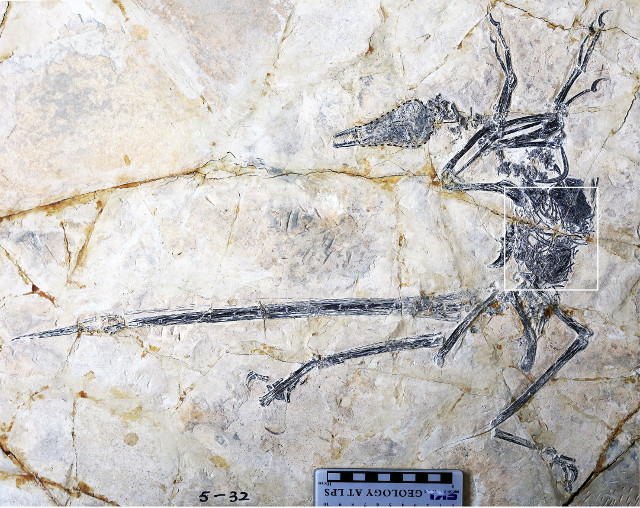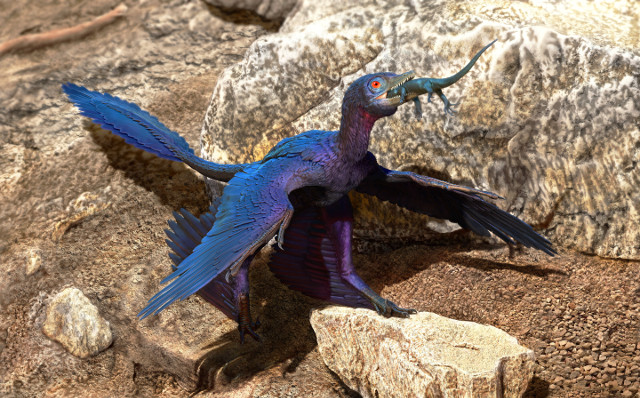
An article published in the journal “Current Biology” reports the study of a specimen of a small feathered dinosaur belonging to the species Microraptor zhaoianus which is not only almost complete but still contained in its stomach the remains of a lizard belonging to a species that was still unknown and was named Indrasaurus wangi. A team of paleontologists led by Professor Jingmai O’Connor of the Chinese Academy of Sciences examined the remains of the two animals that lived about 120 million years ago in today’s China and, also based on three previous discoveries of Microraptor with a preserved prey in their stomach, confirmed the theory that this type of dinosaur was an opportunistic predator.
The genus Microraptor so far includes three identified species and these are some of the smallest known non-avian dinosaurs, which means excluding birds. Many specimens have been discovered in China and are part of the so-called Jehol Biota. The high quality of fossil conservation in that area allowed to discover a lot of information on many species, including these feathered dinosaurs. The Microraptor zhaoianus specimen studied in this research was discovered in the province of Liaoning, in the Jiufotang Formation, then bought in 2005 by Xiaoting Zheng, one of the authors of this research, and cataloged as STM5-32, seen in the top image (O’Connor et al. All rights reserved).
Each new complete or almost complete Microraptor is interesting for the information it can provide on the evolution of birds and their closest relatives, which also means the evolution of their ability to fly. The specimen STM5-32, attributed to the species Microraptor zhaoianus, became even more interesting when it was discovered that its stomach contained another animal, a lizard also almost complete and in pieces, which shows that it was swallowed whole starting from its head. This is also an important element of the study because it shows that this small dinosaur ate similarly to today’s carnivorous lizards and birds.
This is the fourth case of Microraptor discovered together with the contents of its stomach. These cases show that Microraptors ate mammals, birds, fish and lizards, a case study that further confirms the theory that it was an opportunistic predator that could exploit the most common prey both in the arboreal and aquatic habitats of the Jehol ecosystem of the Early Cretaceous period, as described in an article published in April 2013 in the journal “Evolution” that’s in particular about the species Microraptor gui.
The authors of this new research highlighted similarities between Microraptors and another small feathered dinosaur, Anchiornis huxleyi, the subject of various researches such as the one published in November 2017 in the journal “Palaeontology”.
In the context of the Jehol Biota, with this discovery the predator-prey relationships documented rise to 20 thanks to the finding of contents in animals’ stomach. Taking advantage of this new case, the researchers tried to reconstruct the food chain of that area, even if in a preliminary way, an important task to understand that ecosystem. The data indicate that fish was the most important food source for secondary and tertiary consumers.
The study of the various characteristics of the many feathered dinosaurs discovered in recent years and the ecosystems in which they lived are bringing new insights about the evolution of flight in birds and on the differences among the adaptations existing in the various groups of feathered dinosaurs. Only the ancestors of modern birds survived the great extinction of the end of the Cretaceous period and according to Jingmai O’Connor it’s possible that this happened because they had a whole amount of characteristics while their cousins had only a few of them.



Permalink